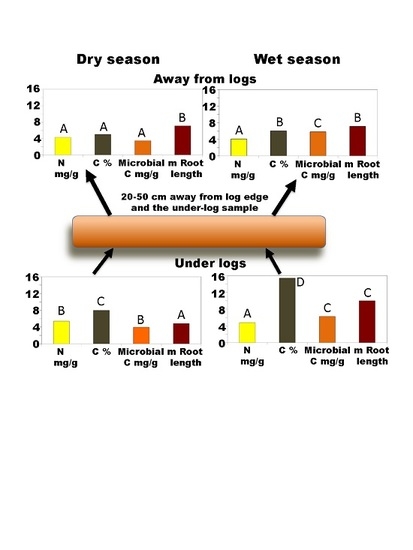Published Date
Author
For further information log on website :
http://www.mdpi.com/1999-4907/7/11/264?trendmd-shared=0
Forests 2016, 7(11), 264; doi:10.3390/f7110264
Author
1
United States Department of Agriculture, Forest Service, Northern Research Station, Luquillo 00773-1377, Puerto Rico
2
Department of Psychiatry, Columbia University, 180 Ft. Washington Ave., New York, NY 10032, USA
3
United States Department of Agriculture, Forest Service, International Institute of Tropical Forestry, Jardín Botánico Sur, 1201 Ceiba St.-Río Piedras 00926, Puerto Rico
4
Carmel Valley Middle School, 3800 Mykonos Lane, San Diego, CA 92007, USA
*
Author to whom correspondence should be addressed.
Academic Editors: Scott X. Chang and Xiangyang Sun
Received: 29 August 2016 / Revised: 24 October 2016 / Accepted: 31 October 2016 / Published: 4 November 2016
(This article belongs to the Special Issue Nutrient Cycling and Plant Nutrition in Forest Ecosystems)
Abstract
Decaying coarse woody debris can affect the underlying soil either by augmenting nutrients that can be exploited by tree roots, or by diminishing nutrient availability through stimulation of microbial nutrient immobilization. We analyzed C, N, microbial biomass C and root length in closely paired soil samples taken under versus 20–50 cm away from large trunks of two species felled by Hugo (1989) and Georges (1998) three times during wet and dry seasons over the two years following the study conducted by Georges. Soil microbial biomass, % C and % N were significantly higher under than away from logs felled by both hurricanes (i.e., 1989 and 1998), at all sampling times and at both depths (0–10 and 10–20 cm). Frass from wood boring beetles may contribute to early effects. Root length was greater away from logs during the dry season, and under logs in the wet season. Root length was correlated with microbial biomass C, soil N and soil moisture (R = 0.36, 0.18, and 0.27, respectively; all p values < 0.05). Microbial biomass C varied significantly among seasons but differences between positions (under vs. away) were only suggestive. Microbial C was correlated with soil N (R = 0.35). Surface soil on the upslope side of the logs had significantly more N and microbial biomass, likely from accumulation of leaf litter above the logs on steep slopes. We conclude that decaying wood can provide ephemeral resources that are exploited by tree roots during some seasons. View Full-Text
Keywords: coarse woody debris; nitrogen cycling; soil carbon; soil nitrogen; tree roots; bark beetle frass; fine root proliferation; nutrient hotspots
▼ Figures
This is an open access article distributed under the Creative Commons Attribution License which permits unrestricted use, distribution, and reproduction in any medium, provided the original work is properly cited. (CC BY 4.0).
http://www.mdpi.com/1999-4907/7/11/264?trendmd-shared=0






No comments:
Post a Comment